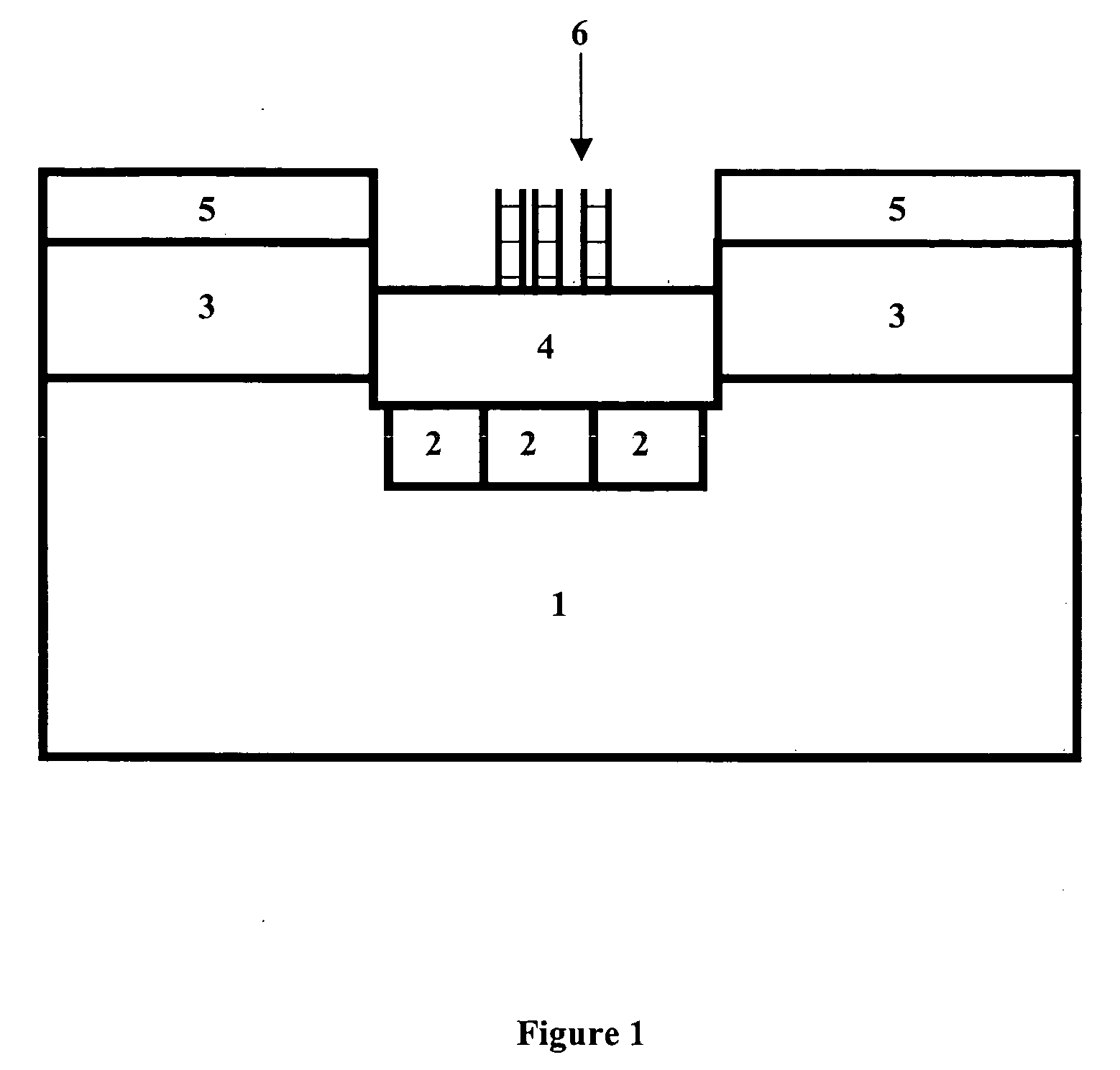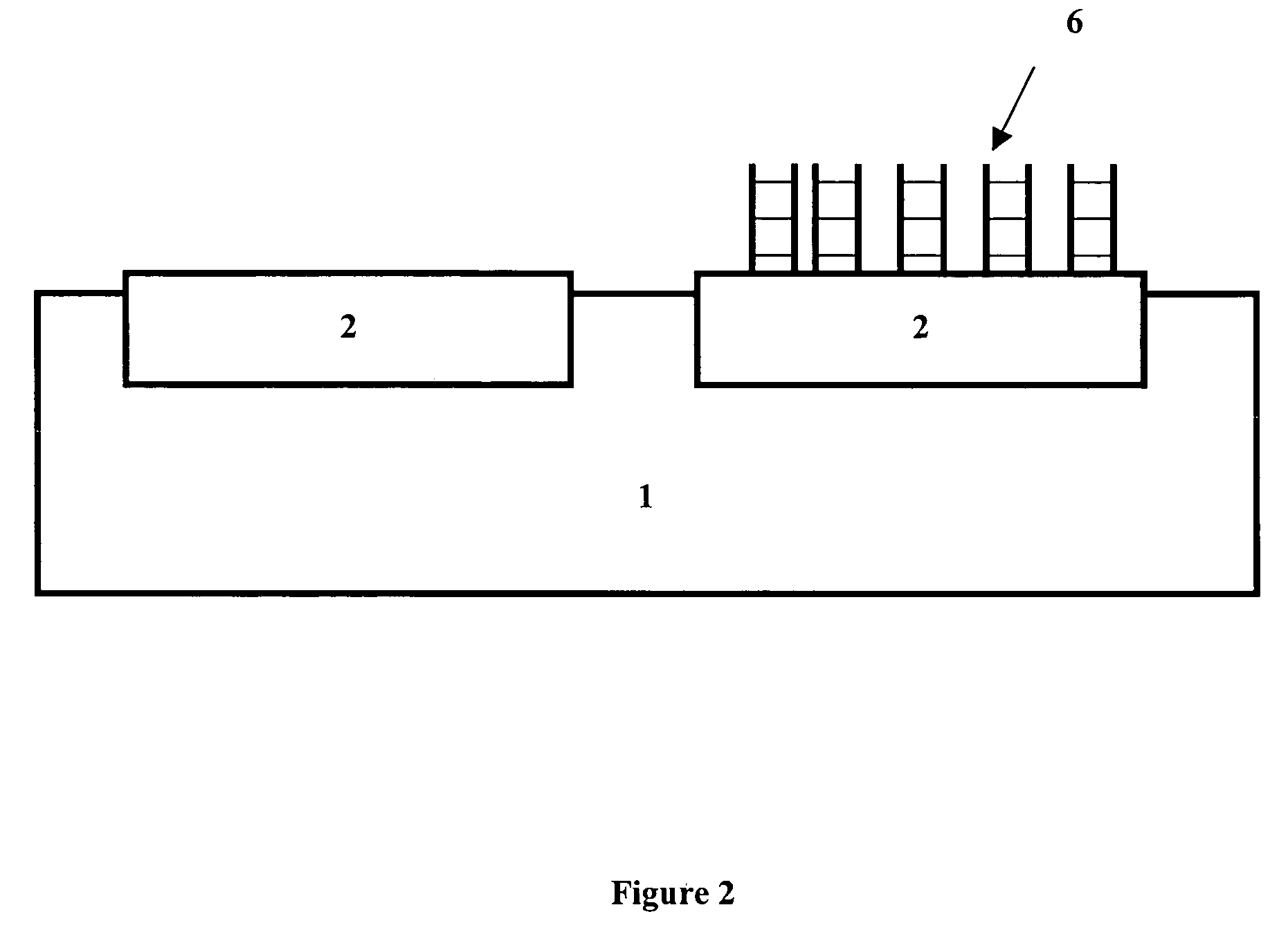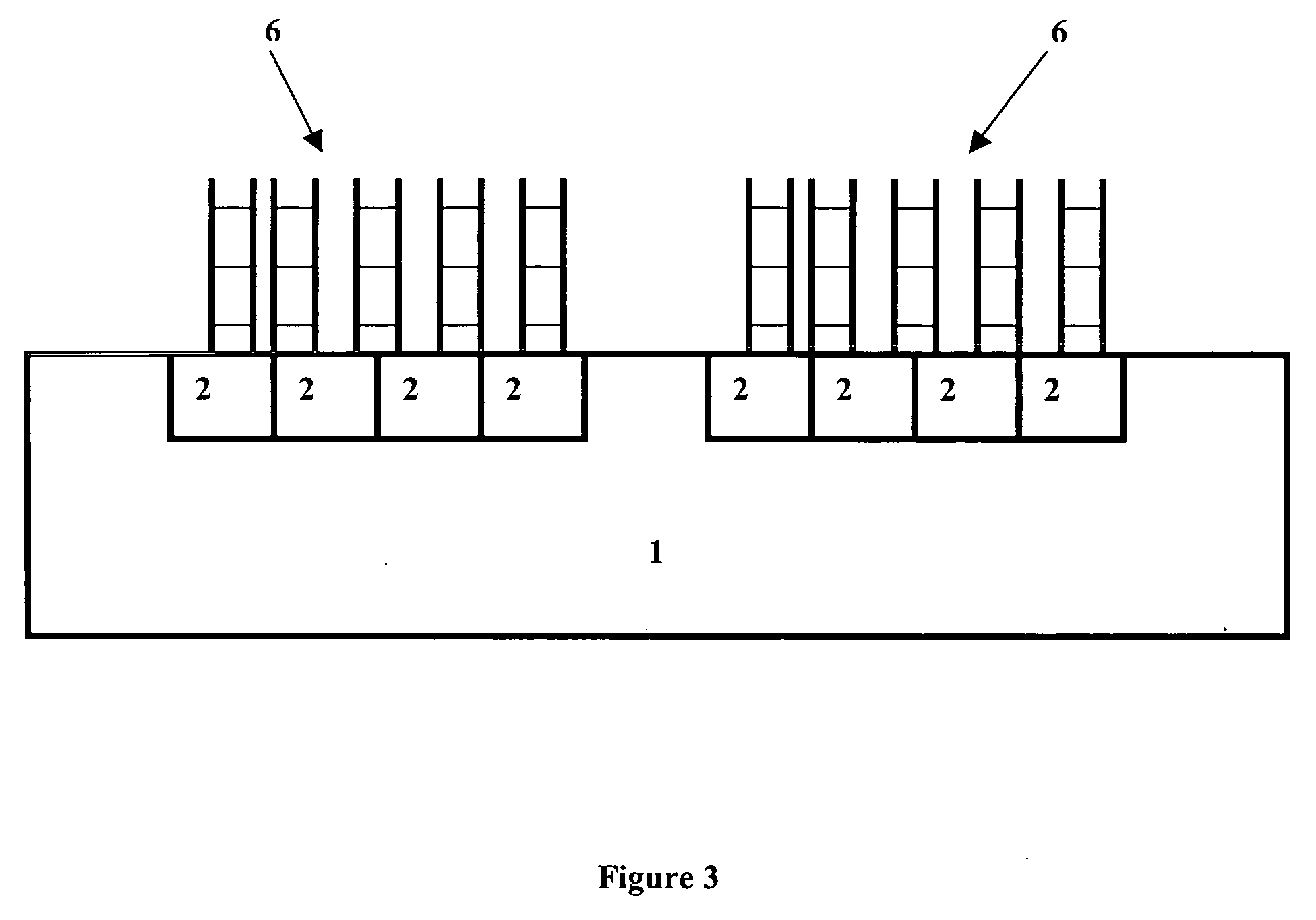Biosensor and method for detecting analytes by means of time-resolved luminescene
- Summary
- Abstract
- Description
- Claims
- Application Information
AI Technical Summary
Benefits of technology
Problems solved by technology
Method used
Image
Examples
Embodiment Construction
[0100] Manufacture of a Biosensor According to the Invention in the Form of a Microchip
[0101] The sensor is fabricated using 6" (inch) wafers with a 0.5 .mu.m CMOS process. Each pn photodiode is arranged in an n-trough on p-substrate. After the field oxidation, the definition of the p-regions of the photodiode and the application of the 10 nm thick gate oxide layer take place. This is followed by the superimposition and structuring of a silicon dioxide layer. Finally the other usual CMOS steps are performed, such as for example the application of a wiring layer and surface passivation (scratch protection).
[0102] Coating the CMOS Biosensor
[0103] The CMOS sensor manufactured as above is coated with the silane by dipping it into a solution of 1% GOPS (glycidyloxypropyl triethoxysilane) and 0.1% triethylamine in toluene for a period of approx. 2 hours. Afterwards the microchip is removed from the solution and after dripping dry for a short time it is fixed in a drying cabinet at 120.deg...
PUM
| Property | Measurement | Unit |
|---|---|---|
| Nanoscale particle size | aaaaa | aaaaa |
| Size | aaaaa | aaaaa |
| Size | aaaaa | aaaaa |
Abstract
Description
Claims
Application Information
 Login to View More
Login to View More - R&D
- Intellectual Property
- Life Sciences
- Materials
- Tech Scout
- Unparalleled Data Quality
- Higher Quality Content
- 60% Fewer Hallucinations
Browse by: Latest US Patents, China's latest patents, Technical Efficacy Thesaurus, Application Domain, Technology Topic, Popular Technical Reports.
© 2025 PatSnap. All rights reserved.Legal|Privacy policy|Modern Slavery Act Transparency Statement|Sitemap|About US| Contact US: help@patsnap.com



